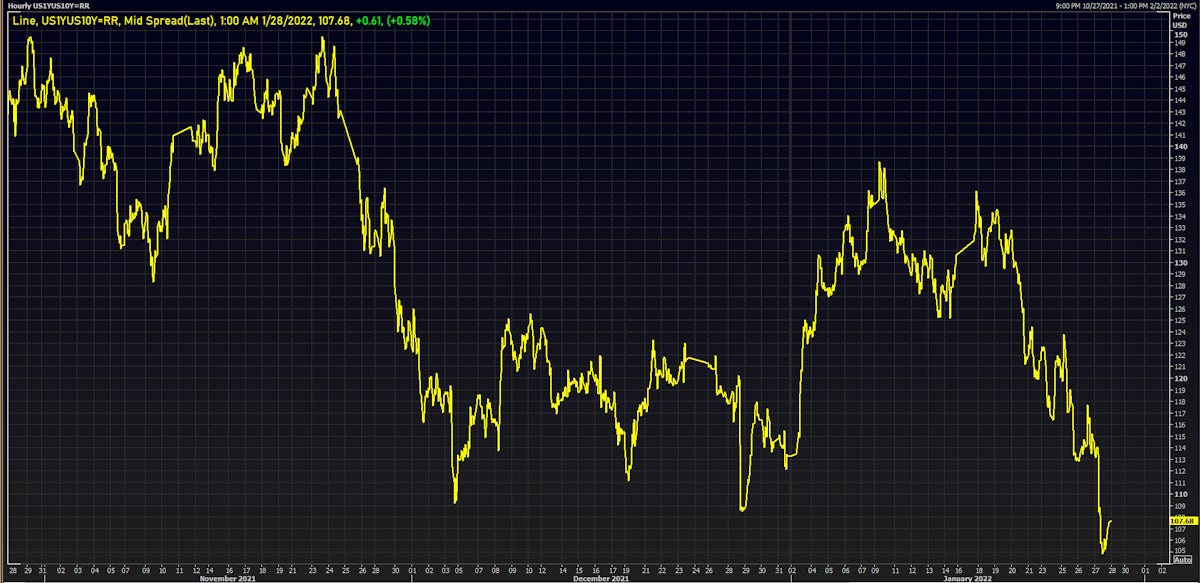Opinion: The Fed's Hawkish Tone At The FOMC Is Amplifying Volatility, Without A Clear Sense That It's Part Of A Credible Plan
Since Wednesday afternoon, front-end yields have risen further and the curve has flattened as a consequence of the Fed's new positioning, but we wonder whether that is a feature or a bug in their new strategy
Published ET

US Treasuries 1s10s Spread | Source: Refinitiv
SOME FURTHER COMMENTS ABOUT THE FOMC
Thinking again about the committee's announcements earlier this week, we feel the Fed has brought on itself the following problems:
1) Lack of credibility and clarity:
- We've said it at nauseam, but the market doesn't believe the Fed will hike enough to reach a terminal rate of 2.50%, with the rise in yields at the front end of the curve still paired with flattening further out
- When inflation is running at 7%, the real Fed Funds rate is deeply negative and the only way to get tighter monetary policy is to have a positive real rate
- So, if they wanted to tighten financial conditions, they could easily say "we will hike rates by 25 bp every month until core CPI is down to 2.25%"
- Signaling to the market that they would be ready to raise the Fed Funds rate by 3% over the next year would definitely go a long way towards making them more credible, as core inflation isn't likely to be much lower than 3% one year from now
- And they would succeed in quickly getting the real Funds rate close to zero (neutral point), which is job number one when you want to tighten financial conditions
- Laying out the plan so openly would also give a lot more clarity to the market about the Fed's reaction function in case inflation came in lower than expected
2) They are become a destabilizing force, as their new shift towards tactical policymaking will amplify volatility and possibly disrupt economic growth:
- Ad-hoc, on-the-fly decision-making sounds great until you realize there are trillions of dollars in asset prices hanging to your guidance, and a finite amount of market liquidity to absorb possible zigzags
- Saying that they don't care about the shape of the curve is akin to telling the market that they want an inversion, which will chill commercial banking, a business based on carry (borrow short, lend long), and slow down the economy
- So, job number two in our opinion should be to make sure the spot curve doesn't invert, as credit growth and economic growth depend on it
- To this end, they should explain as quickly as possible how QT can be used strategically as a tool to shape the curve in the most desirable way
We genuinely hope we're completely wrong, because we really don't want to believe that the Fed is blind to those simple observations.
We also hope that flattening the curve isn't a steal from Fauci's playbook, but is instead part of a genius grand strategy to beat inflation.
Considering the delicate situation the Fed is facing right now, with a very narrow path of success (defined as killing inflation without bringing a recession), we'd like to think a capable team is running the ship.
But perhaps our definition of success is too ambitious, with their only goal now being to bring inflation down, at any cost.